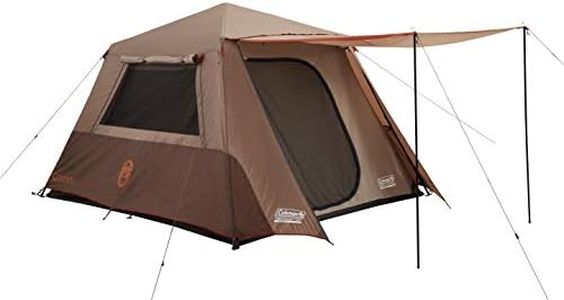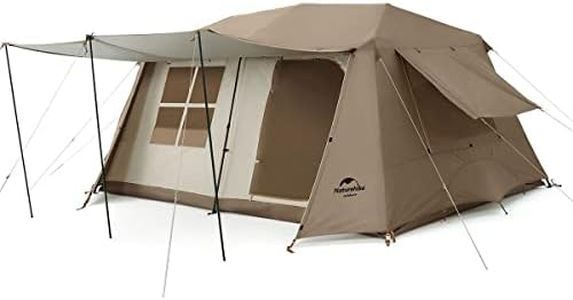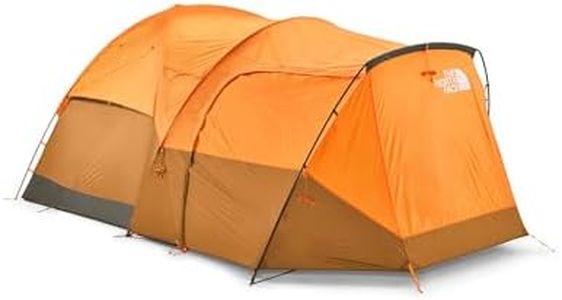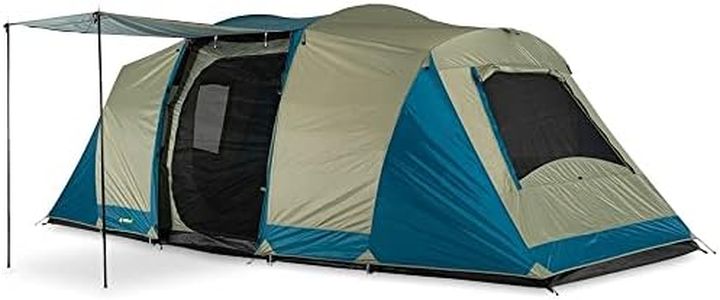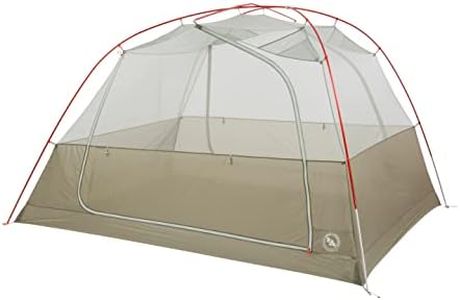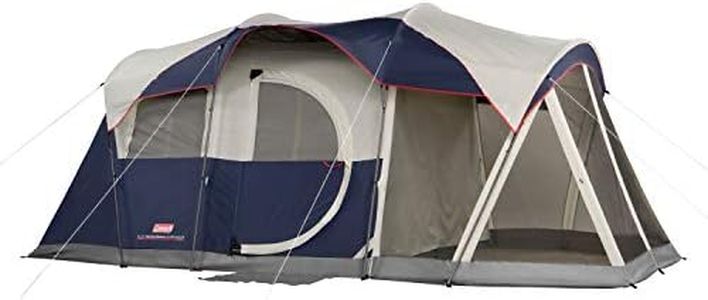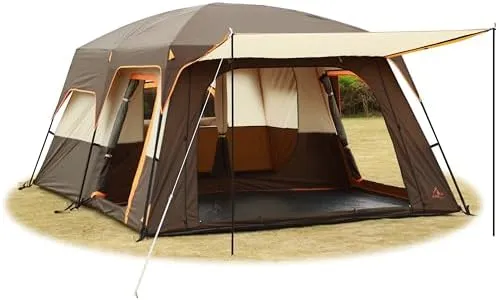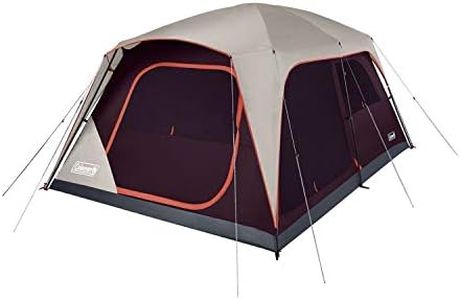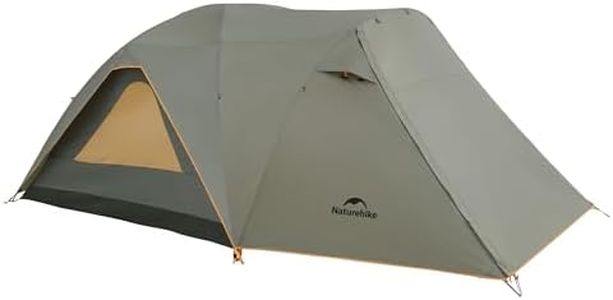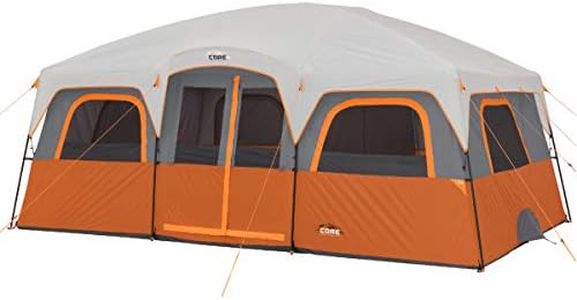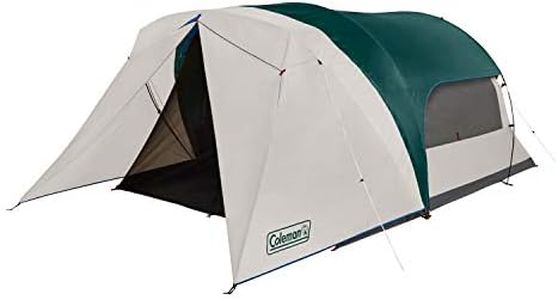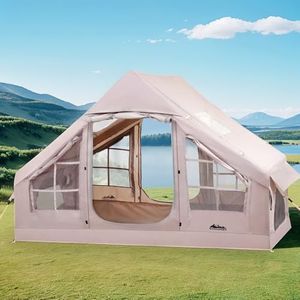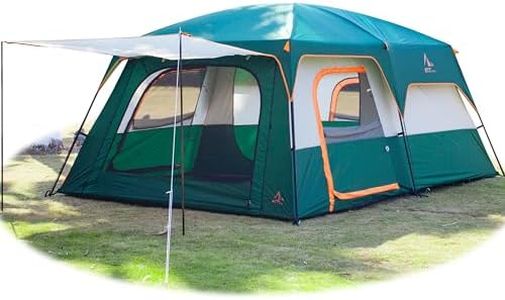We Use CookiesWe use cookies to enhance the security, performance,
functionality and for analytical and promotional activities. By continuing to browse this site you
are agreeing to our privacy policy
10 Best Family Tents
From leading brands and best sellers available on the web.Buying Guide for the Best Family Tents
Choosing the right family tent is all about matching your family's size, comfort needs, and how you plan to use the tent. Before making a purchase, consider where and how often you'll camp, the weather conditions you expect, how much space you need, and how easy the tent should be to set up. It's helpful to think about both sleeping space and room for gear and daytime activities. Focus on practical features that will make camping comfortable, convenient, and safe for your family.CapacityCapacity refers to the number of people a tent is designed to hold. This is important because it indicates how much sleeping space you can expect. Manufacturers often rate tents by the maximum number of people that can sleep side by side, but this calculation usually doesn't leave much room for personal space or gear. For a comfortable experience, especially with kids or extra gear, consider choosing a tent rated for more people than you actually have in your family. If you need just a place to sleep and don't mind being cozy, stick closer to your actual numbers.
Season RatingSeason rating describes the type of weather a tent is equipped to handle. Most family tents are rated as '3-season', meaning they are suitable for spring, summer, and fall—providing good protection from rain and moderate wind, but not heavy snow or extreme cold. Some tents are '4-season', designed for winter conditions with sturdier poles and better insulation but are often heavier and less ventilated. For most families who camp during regular holiday months, a 3-season tent is sufficient, but winter campers should choose a 4-season model.
Setup ComplexitySetup complexity refers to how easy or difficult it is to pitch the tent. This matters because a complex tent setup can turn the start of your camping trip into a stressful event, particularly with young kids. Some tents feature simple, instant-pitch designs with color-coded poles or pre-attached frames, making them manageable even for beginners. Others may require more time and teamwork. If ease of use is important, look for tents described as 'instant' or 'easy setup', especially if you anticipate setting up camp on your own or after a long drive.
Weather ResistanceWeather resistance encompasses how well the tent stands up to rain, wind, and sometimes, temperature changes. This includes the quality of materials, seam sealing, the presence of a rain fly, and the sturdiness of the frame. If you're expecting to camp in areas with unpredictable weather, prioritize tents with a full-coverage rain fly, bathtub-style floors, and strong poles. For mostly fair-weather campers, more basic weather protection will suffice, but always choose a tent with a good reputation for keeping water and wind out.
VentilationVentilation is about the tent’s ability to allow fresh air in and moist, warm air out. This affects comfort, preventing stuffiness, condensation, and overheating, particularly on warm nights. Tents achieve good ventilation with mesh panels, multiple windows, and adjustable vents. Families camping in hot or humid climates should look for tents with lots of mesh and multiple vents. In cooler environments, some ventilation is still important but too much mesh can reduce warmth.
Interior Space & LayoutInterior space and layout refers to the amount of usable floor area, the height inside the tent, and features like room dividers and vestibules. Taller tents allow adults to stand up and move around easily, while divided rooms or 'pods' can provide privacy or manage noise. Vestibules (covered spaces just outside the door) can give you a place for muddy boots and gear. Think about your family's size and habits—active kids, teens wanting privacy, or the need for a play area—and choose a layout that fits your activities.
PortabilityPortability covers the weight and packed size of the tent. While most car-camping family tents can be reasonably large and heavy, if you plan to carry your tent further from the car or move to multiple sites, lighter, more compact tents are worth considering. If your family camps mainly in established campgrounds with drive-up access, tent weight and packed size are less critical, but always make sure you and another adult can handle the packed tent comfortably.

